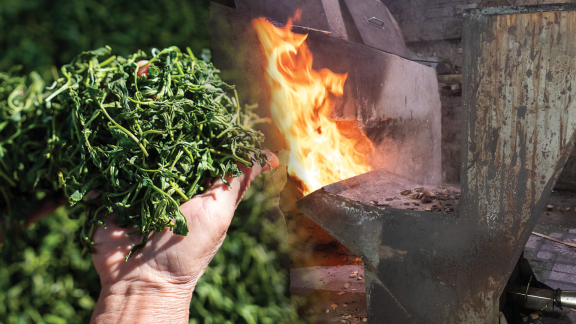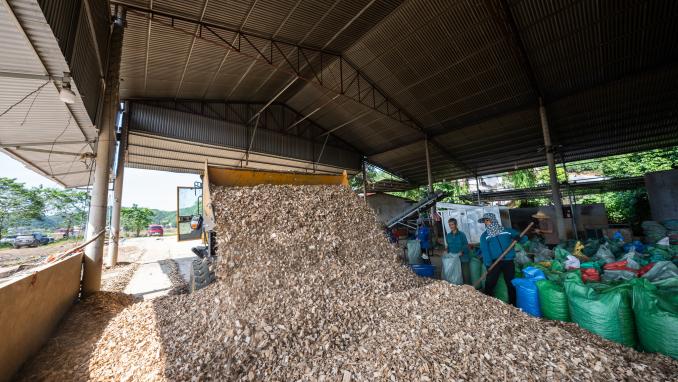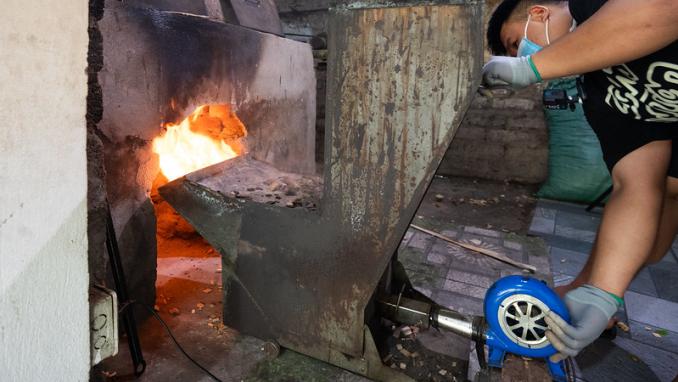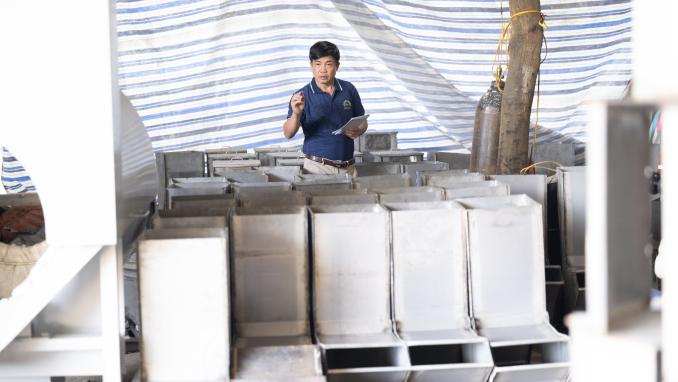After four years of building an ecosystem to promote the application of biomass gasification technology in agricultural processing, the BEST Project has concluded with significant potential for scaling up.
As an agricultural country, Vietnam generates approximately 118 million tons of agricultural and forestry by-products annually, such as cinnamon branches, acacia branches, bark, sawdust, corncobs, etc (1). This is a rich resource, but it is underutilized and exacerbates rural waste issues.
Moreover, most businesses and households in the northern mountainous regions still primarily rely on wood and charcoal stoves for agricultural processing, despite their negative impacts on workers' health, the community, and the environment.
According to a study on 11 households conducted by the BEST Project, the concentration of carbon monoxide (CO) accounted for 0.81% of the volume of emissions from the wood-fired tea roasting process (2), which is 900 times higher than the recommended indoor air quality standard (0.0009% by volume) (3). High CO levels can cause severe poisoning.
The project "Biomass Gasification Technology - A Sustainable Energy Solution for Agricultural Processing and Rural Waste Management in Vietnam" (BEST) introduced continuous volumetric biomass gasification technology (or biomass gasification) as a comprehensive solution to address the limitations of traditional processing methods. The project was funded by the European Union and implemented by Oxfam in Vietnam and the Research, Consulting, Innovation, and Sustainable Development Center in Thai Nguyen, Lao Cai, Yen Bai, and Tuyen Quang from 2020 to 2024.
Biomass gasification technology converts agricultural by-products such as cinnamon branches, acacia branches, bark, sawdust, corncobs, etc., into a clean energy source. This technology burns fuel in a low-oxygen environment, producing a gas mixture that is then burned when exposed to oxygen at a sufficiently high temperature. The operational process does not generate smoke.

Using biomass gasification technology to roast and dry tea at Tea Production Facility in Thai Nguyen.
Photo: Nguyen Duc Hieu/Oxfam
To assess the benefits and costs for production households when applying this technology, the project conducted an in-depth study on 11 green tea processing households in 2024. Compared to traditional processing methods such as wood, gas, or electric stoves, biomass gasification technology in green tea processing helps improve economic efficiency, enhances user health, and reduces environmental pollution.
Project research (4) shows that using biomass gasification stoves in green tea processing leads to:
- Saving 34% of costs compared to wood, 69% compared to gas stoves, and 19% compared to electric stoves when roasting and drying one kilogram (kg) of finished tea using a biomass gasification stove with chipped branches.
- Saving 50 million VND in labor costs per year as the stove is easy to operate, automatically refuels, and does not require constant supervision.
- The quality of the finished tea improves and sells at a higher price since it is not contaminated by smoke or dust.
- Carbon emissions are 48% lower than those from wood, ensuring better health for users.
- It is estimated that if the technology were scaled across the province, it could save more than 790 billion VND per year in healthcare costs.
Understanding the benefits and market potential of biomass gasification technology, the project adopted an ecosystem-building approach, supporting the operation of a system involving three key players: agricultural processing businesses/facilities, mechanical engineering facilities, and biomass fuel suppliers. Focusing on people as the center, the project regularly surveyed and improved the technology to suit various agricultural processing sectors such as green tea, black tea, rice drying, cassava, vermicelli, and bánh chưng (traditional sticky rice cake). The project also organized various activities, including demonstration model development, technology transfer, and direct training for enterprises and processing households.
"Using wood-fired stoves was exhausting, but switching to biomass gasification stoves has made life much easier. My household economy has improved, and I now have more time for the social work I love," shared Nguyen Thi Du, owner of Son Du Tea Facility in Thai Nguyen. Many production households have voluntarily introduced the technology to their neighbors, contributing to the spread of good practices.
To ensure a stable and sustainable support ecosystem, the project encouraged mechanical engineering facilities to participate in improving and producing biomass gasification stoves and biomass chipping machines. Nguyen Hong Thang, a mechanical expert in Thai Nguyen, affirmed: "These stoves are locally produced, and the input materials are easily accessible, making repairs convenient. I think the stove can be widely adopted because it is suitable for many processing industries."
After four years of implementation, nearly 500 businesses and households have adopted the technology, and dozens of enterprises producing and trading biomass stoves and fuels have been established, many of which are women-led. Most importantly, the ecosystem has created jobs for hundreds of local workers, including many women and disadvantaged communities.
"BEST not only introduces a technological solution but also serves as a driving force for transforming agricultural production towards sustainability. The project contributes to emission reduction, efficient resource use, and the promotion of a circular economy in Vietnam," said Nguyen Hung Cuong, Project Manager, Oxfam in Vietnam.
With its economic, health, and environmental benefits, along with its flexible application, biomass gasification technology holds great potential for scaling up.
----------------------
(1) "Awakening" Biomass Energy, Ministry of Industry and Trade, 2021
(2), (4) Report on the updated analysis of the benefits and costs of using biomass gasification technology in green tea production in Thai Nguyen, published in September 2024
(3) Risk of indoor air pollution to human health, recommendations for issuing quality standards and improvement solutions, Environment Magazine, Special Issue on Air Environment, 2022
Watch the video comparing cost and benefits of the technology in agricultural processing video here:
View more photos of BEST project here:
(21.09.2024) BEST - Yên Bái field trip
(03-04.09.2024) BEST - Thái Nguyên field trip
(01.06.2023) A demonstration of a biomass gasifier stove (VCBG) at Lao Cai
(2022.04.13) EU Visit - BEST project in Thai Nguyen




